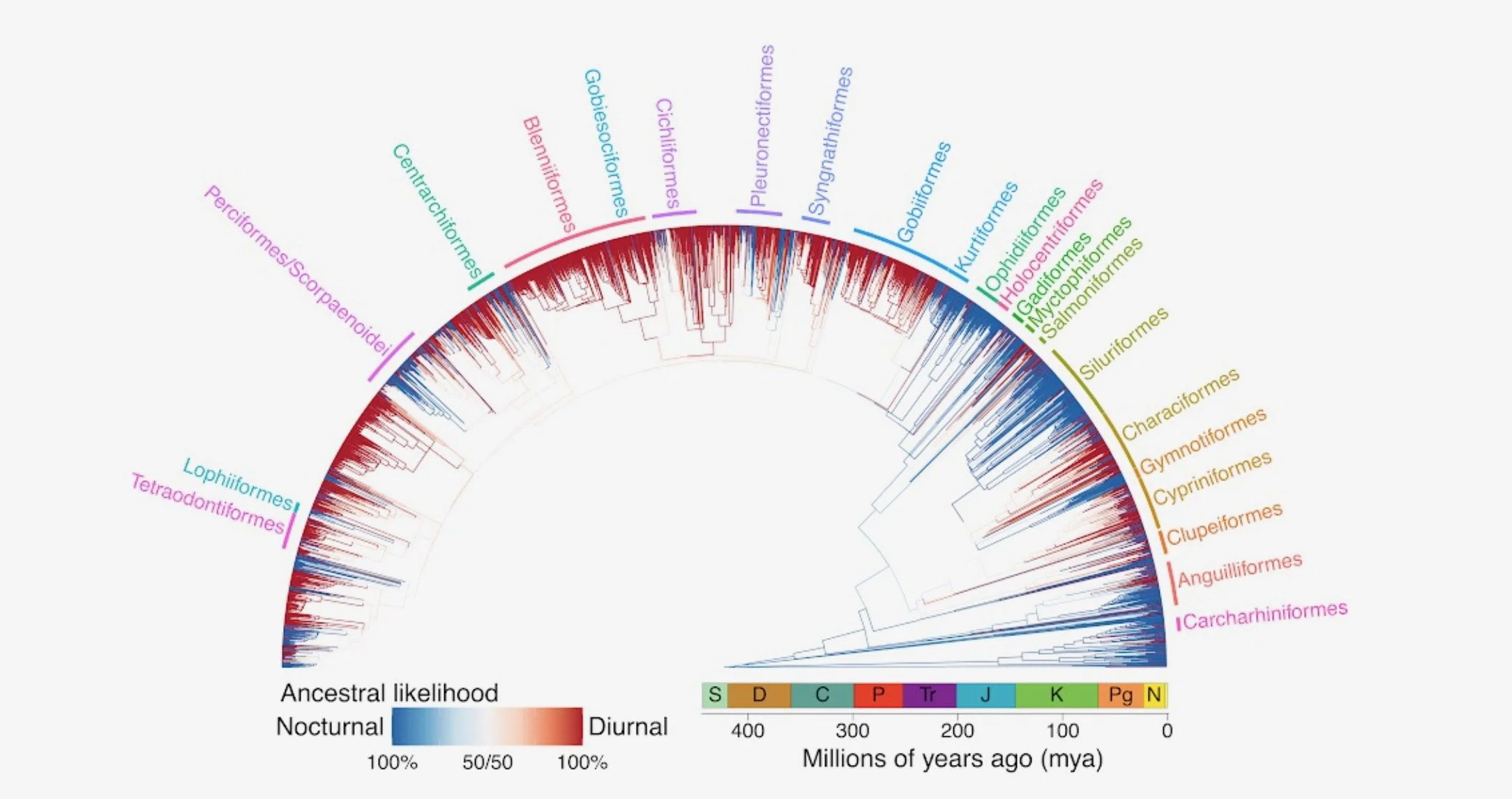The daily change between night and day is an important signal in our environment. Animal species have adapted their activity patterns to optimise for activity for certain times of day. For example, eagles are diurnal (day active) while owls are nocturnal (night active). Published work suggests that mammals were mostly nocturnal during when they first evolved, and only diversified into diurnal species after the mass extinction of dinosaurs. However, we don’t know how these evolutionary patterns could look like for bony fishes - which make up about half of all vertebrate species. In this paper, we used a meta-analysis of activity patterns combined with phylogenetic reconstruction to investigate the evolutionary transitions of diurnality and nocturnailty of extant lineages. We find that the last common ancestor of bony fishes and all vertebrates was likely nocturnal. And that bony fishes are especially good at switching between diurnality and nocturnality (twice as much as the other vertebrates - birds, reptiles, mammals and amphibians). This work suggests that nocturnal lineages are more likely to survive through mass extinction events.
Read more in the manuscript Frequent transitions from night-to-day activity after mass extinctions here
And check out this piece in Science News here
